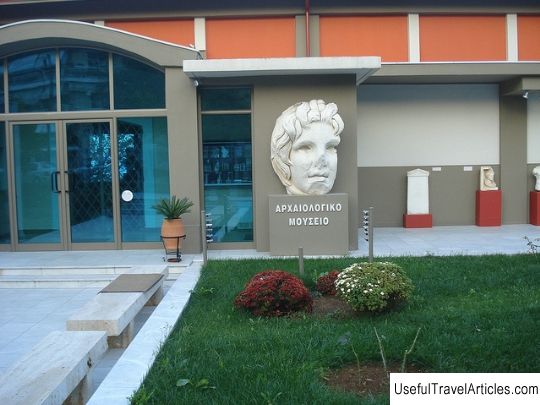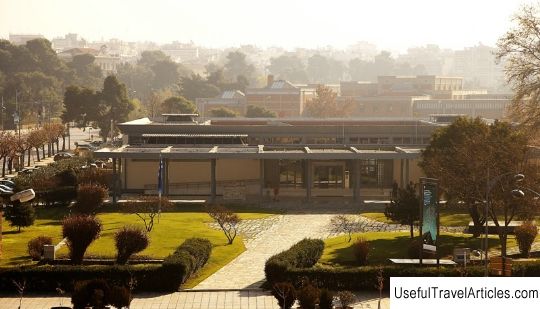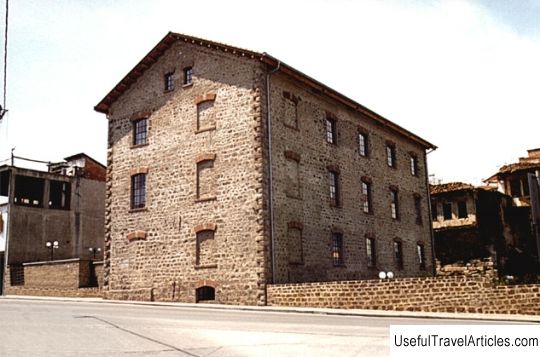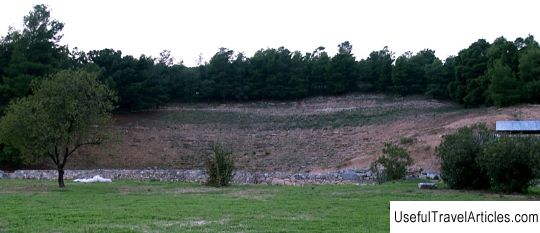Vergina description and photos - Greece: Veria
Rating: 7,5/10 (100 votes) 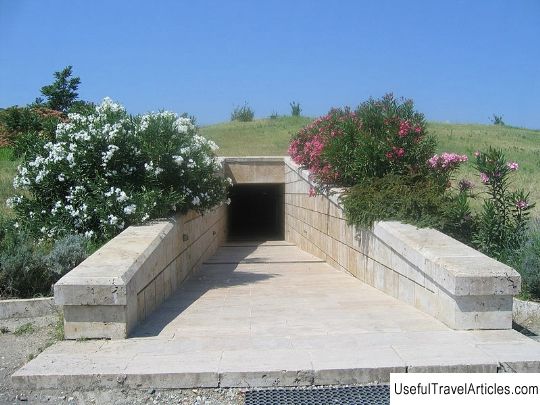
Vergina description and photos - Greece: Veria. Detailed information about the attraction. Description, photographs and a map showing the nearest significant objects. The name in English is Vergina. Photo and descriptionVergina is a small Greek town in Central Macedonia (prefecture of Imathia). It is located at the foot of Mount Pieria, 120 m above sea level, about 13 km from Veria and 85 km from Thessaloniki. As a result of archaeological excavations near Vergina, it was proved that it was here in ancient times that the first capital of the Macedonian kingdom, Aegi, was located. The territory of modern Vergina has been inhabited since the beginning of the Bronze Age (3rd millennium BC). ) and has been dynamically developing and flourishing for many centuries. The ancient city of Aegi played an important role in world history and became a cult center for the Macedonian state. Despite the fact that in the 4th century BC. the capital of Ancient Macedonia was moved to Pella, Aegi retained the status of a sacred city and the tomb of the Macedonian kings. Probably the reason for this was the legend, which said that the ruling dynasty would come to an end as soon as one of the kings was laid to rest outside the city. Perhaps this is just a coincidence, but after the death of Alexander the Great, the Great Power really collapsed. The first excavations in this region were started by French archaeologists back in 1861, during which part of the once majestic palace complex and the ancient burial ground. For some reason, the work was stopped and partially resumed only in 1937, but again abandoned at the beginning of 1940 due to the outbreak of war with Italy. Large-scale archaeological excavations began already in the 1950s. The city gained its worldwide fame in 1977, when the famous Greek archaeologist Andronicus Manolis discovered numerous royal burials in the vicinity of Vergina, among which the magnificently preserved famous tomb of Philip II (father of Alexander the Great) with many unique ancient artifacts made a special sensation. And although most of the tombs were plundered long ago, the structures themselves, which are a fine example of ancient architecture, are of great interest. Unique and stunning colored frescoes that adorn the tombs. In general, during the archaeological excavations, many ancient relics were discovered that are of great historical and artistic value - magnificent jewelry, various items of gold and silver, household utensils, ceramics, armor, weapons and others funerary artifacts. But undoubtedly The most important archaeological find is considered to be a golden chest, which is believed to contain the remains of the Macedonian king Philip II. The Archaeological Museum, opened in Vergina in 1993, is in some way unique. The burial mound, hidden during excavations, was artificially restored, thereby forming something like an underground bunker, where the optimal temperature and humidity are constantly maintained, and in which you can see ancient burial chambers, and in a special room, and real royal treasures. Some of the relics found during the excavations are stored in the Archaeological Museum in Thessaloniki. Today Vergina is considered one of the most important archaeological sites in Greece and is included in the UNESCO World Heritage List.       Topic: Vergina description and photos - Greece: Veria. |
